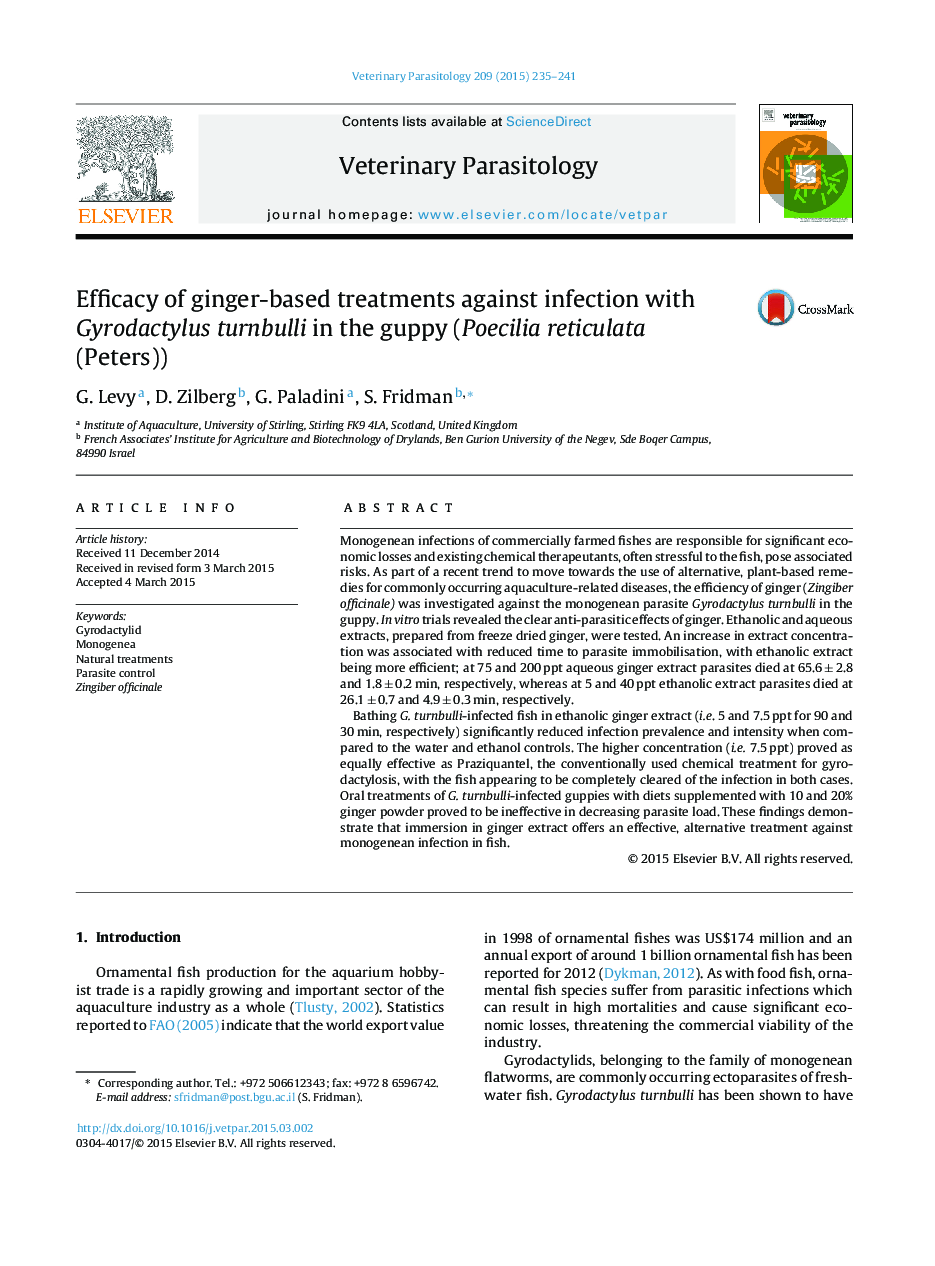| کد مقاله | کد نشریه | سال انتشار | مقاله انگلیسی | نسخه تمام متن |
|---|---|---|---|---|
| 5802723 | 1555672 | 2015 | 7 صفحه PDF | دانلود رایگان |

- Parasitic infections of fish result in high mortalities and economic losses.
- Natural plant-based treatments offer alternative disease control strategies.
- Ginger-based products eliminate monogeneans in guppies.
Monogenean infections of commercially farmed fishes are responsible for significant economic losses and existing chemical therapeutants, often stressful to the fish, pose associated risks. As part of a recent trend to move towards the use of alternative, plant-based remedies for commonly occurring aquaculture-related diseases, the efficiency of ginger (Zingiber officinale) was investigated against the monogenean parasite Gyrodactylus turnbulli in the guppy. In vitro trials revealed the clear anti-parasitic effects of ginger. Ethanolic and aqueous extracts, prepared from freeze dried ginger, were tested. An increase in extract concentration was associated with reduced time to parasite immobilisation, with ethanolic extract being more efficient; at 75 and 200 ppt aqueous ginger extract parasites died at 65.6 ± 2.8 and 1.8 ± 0.2 min, respectively, whereas at 5 and 40 ppt ethanolic extract parasites died at 26.1 ± 0.7 and 4.9 ± 0.3 min, respectively.Bathing G. turnbulli-infected fish in ethanolic ginger extract (i.e. 5 and 7.5 ppt for 90 and 30 min, respectively) significantly reduced infection prevalence and intensity when compared to the water and ethanol controls. The higher concentration (i.e. 7.5 ppt) proved as equally effective as Praziquantel, the conventionally used chemical treatment for gyrodactylosis, with the fish appearing to be completely cleared of the infection in both cases. Oral treatments of G. turnbulli-infected guppies with diets supplemented with 10 and 20% ginger powder proved to be ineffective in decreasing parasite load. These findings demonstrate that immersion in ginger extract offers an effective, alternative treatment against monogenean infection in fish.
Journal: Veterinary Parasitology - Volume 209, Issues 3â4, 30 April 2015, Pages 235-241